Old Ghan Railway, South Australia. An End To Isolation
Work began on the Great Northern Railway in 1878 to link Port Augusta with Darwin and open-up central Australia. The southern section of the line reached Alice Springs in 1929.
The train running this line became known as “The Ghan”, named after the Afghan camel drivers who had contributed to the development of communication and transport links in inland Australia.
After the Old Ghan ceased running, it was replaced by the “Legendary Ghan” in 1980, and now travels to Alice Springs on a standard gauge railway line from Adelaide via Tarcoola, west of the old track. It can be seen from the Old Ghan Heritage Railway complex as it speeds into Alice Springs. The final link to Darwin was completed in 2001.
More info on Old Ghan Railway at Road Transport Hall of Fame
 Joe Mortelliti‘s life long love, from when he was first given a Brownie camera as a boy, was photography. It was the focus of his work life for many years. He loved to travel with his wife Marion to as many parts of Australia as he could. He had the ability to ‘see’ the beauty of our land in such a way that he could photograph it for the delight of others. These photos are a legacy that he has left us. Used by permission and with appreciation.
Joe Mortelliti‘s life long love, from when he was first given a Brownie camera as a boy, was photography. It was the focus of his work life for many years. He loved to travel with his wife Marion to as many parts of Australia as he could. He had the ability to ‘see’ the beauty of our land in such a way that he could photograph it for the delight of others. These photos are a legacy that he has left us. Used by permission and with appreciation.

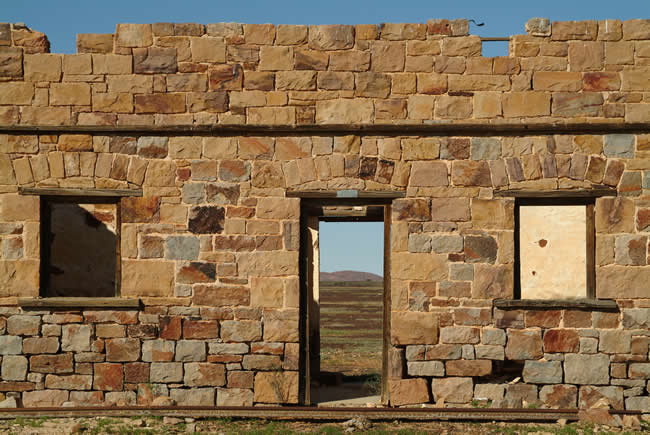
Copyright © Joe Mortelliti Photography
The original narrow gauge (3ft 6ins) railway is closed, and the most of the original track has been removed. The train running this line became known as “The Ghan”, named after the Afghan camel drivers who had contributed to the development of communication and transport links in inland Australia.
More info on Old Ghan Railway at Road Transport Hall of Fame
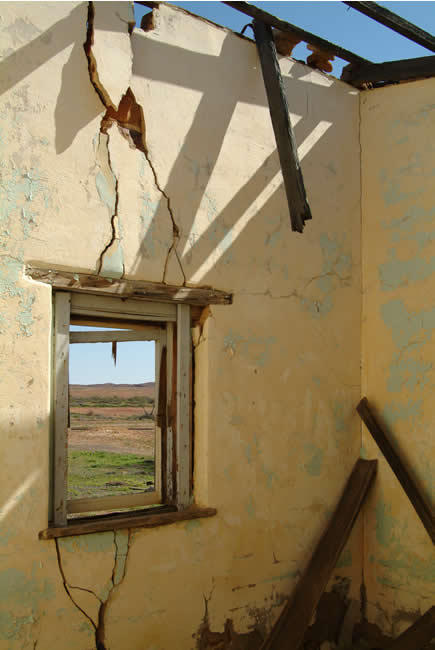
Copyright © Joe Mortelliti Photography
To purchase a Hema map of Central Australia, click here
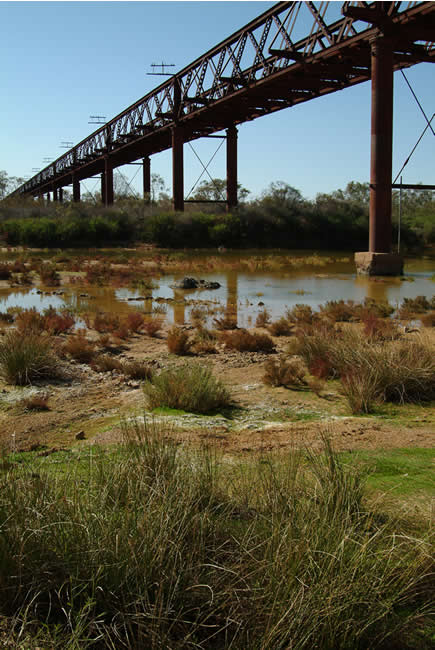
Copyright © Joe Mortelliti Photography
The railway was abandoned in 1981 and by 1987 virtually all useful materials had been salvaged. Within six years the line looked like it had been abandoned for a hundred years.
One of the old Ghan Railway’s most impressive bridges, Algebuckina Bridge, nearly 600 metres long, still spans the Neales river. August 2005.
During the planning of the line in the 1880s the South Australian government realised that the bridge need to span the Neale river flood plain need to be pretty substantial. The tender was let to a James Hooker, who owned the Lion Foundry in Kilkenny.
Construction began 1890 and was completed in January 1892.Because it was not ready for the opening of the Warrina to Oodnadatta section of the railway in January 1891 they had to use the temporary construction causeway. This clearly demonstrated the need for the bridge – it was flooded three times in 12 months, with the line being cut twice.
There is a rest area for travellers near the bridge.
More info here.
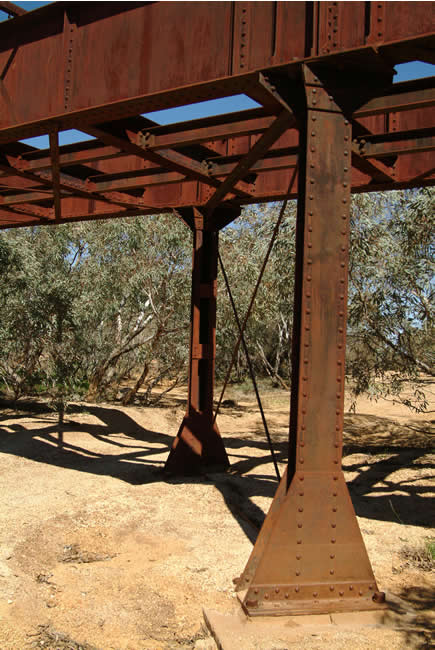
Copyright © Joe Mortelliti Photography
Station owners allow free bush camping here and it is a good gravelly campsite under the old bridge. It is, however, occasionally subject to flash-flooding. August 2005.
To purchase a Hema map of Central Australia, click here
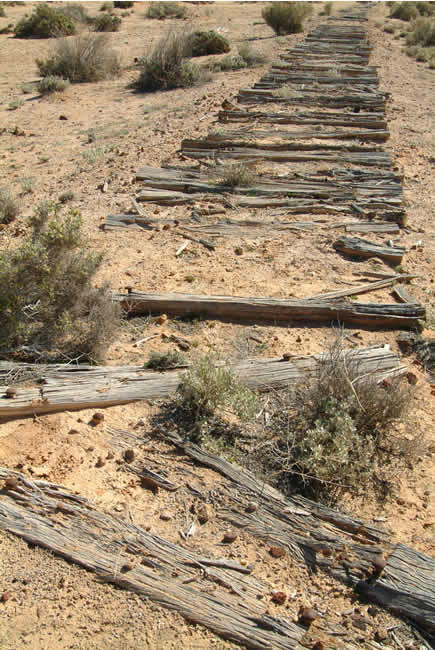
Copyright © Joe Mortelliti Photography
The railway was built with hand tools, with the original work started by contractors. However later the South Australian Government took over the role of builder. Due to unemployment men were then sent to work on the railway. Records show that during a 2 year period following this decision only 60 kilometres of railway was built.
Many railway sleepers were of Jarrah provided from Western Australia. Books on the subject indicate these sleepers cost 8 to 9 shillings each. Given that a Navvy working on the Ghan was paid 3-4 pounds per week the cost of sleepers was very high. Local sleepers were far less costly. The Navvies were the skilled technical men who manually built the railway with hand tools. The term ‘navvy’ is short for navigator.
I note that concrete sleepers seem to be the preferred option now. They seem to be quicker to install, at least with modern equipment, last longer, and save lots of forest!
Purchase your Australian Road and 4WD atlas here. Comprehensive touring information for all of Australia.
This page Copyright © ThisisAustralia.au


All the labels you use every day, with excellent service! EveryLabels.com.au

